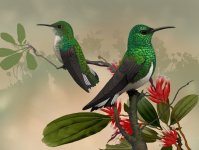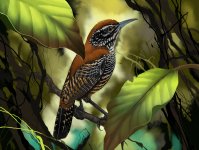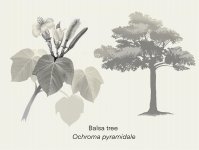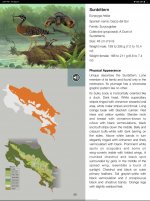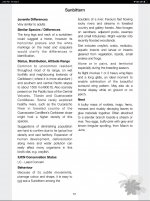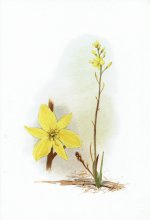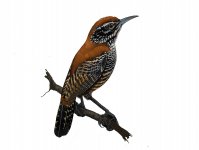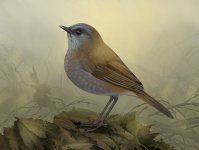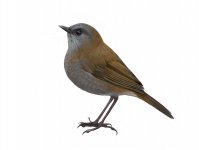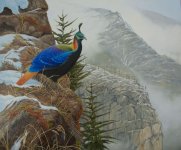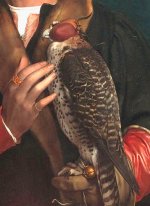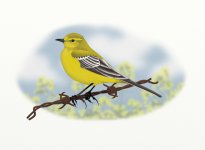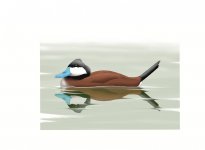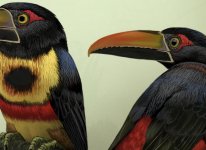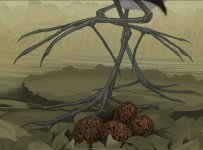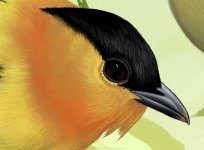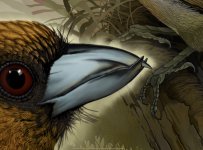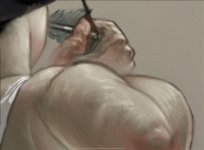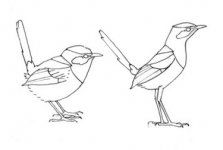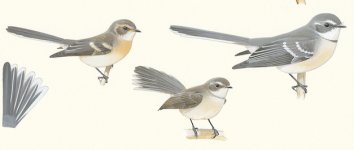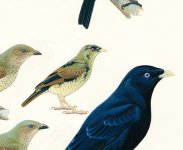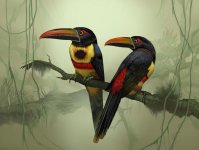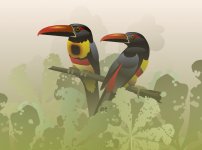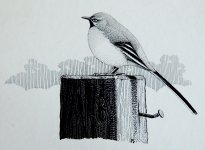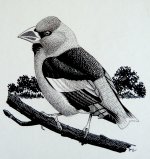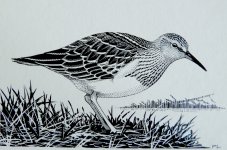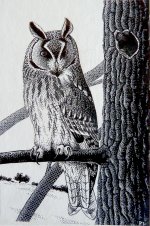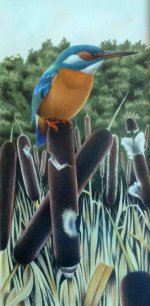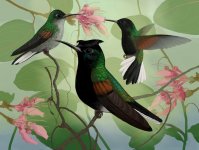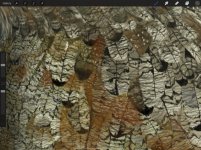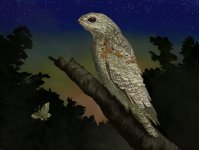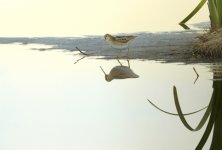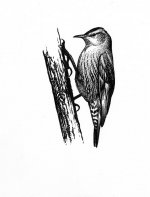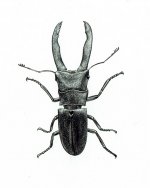Hi Bryan, no apology needed for a detailed reply! And first off I’m very impressed with the set of illustrations in sequence. You have some fabulous spcies to paint and to my eye have done a fine job - I only know some of these birds from photos but your images look ‘right’. I like the detail you have achieved in the heads, a focus of attention for all birders (since we are human and read faces); really good job on the soft light in the eyes.
Thanks for your feedback on putting shadows on yellow. I used it as an example of the sort of colour issue that I have trouble with, and your thoughts on minimising shadow align with mine.
Interested to hear that you think the artwork is your project’s worst enemy; I think this comes down to the artist wanting to do the best possible job and you are fortunate to have tolerant collaborators. Even painting the conventional plates for the Aus Bird Guide took far longer than we anticipated and caused some tensions with the rest of the team, but the end result was as good as we could make it and I think benefits the project in the longer term.
Producing comprehensive regional guides is a balancing act - scope, production time and cost, bulk etc. - though it looks as though the demand is there, and eBooks or apps are one way of keeping information portable. There seems to be no way round the time needed to produce decent artwork needed for a comprehensive guide. I’m interested in your thoughts on using digital guides in the field; I’ve yet to see a device - tablet, phone, whatever - that allows comfortable viewing of the artwork outdoors under natural light. It’s the way of the future but we are not there yet.
You asked about using specimen skins for reference. At the risk of stating the obvious, skins are not much like the living bird, typically consisting of the skin itself and the bones of the wing, lower leg and front of the skull plus bill. The rest is replaced by stuffing, and individual preparators may produce quite differently shaped skins of the same species. The bits you can generally rely on are dimensions of legs and feet and bill (although soft parts shrink), wing length from carpal bend to tip, and tail length. Feather colour and pattern and the arrangement of feather tracts are usually preserved too. Soft part colours are usually noted on specimen labels but tend to be a bit vague, e.g. Iris: brown. Bill: grey. I have painted one extinct species from specimens and descriptions alone, and that process made made appreciate our current access to photography. If you do have access to a collection, make friends with the curator, it’s always good to have an expert to answer your questions on the spot. Note that some collections preserve one spread wing of a bird specimen which is a great help to illustrators.
I do paint subjects other than birds, but the botany and landscapes I paint tend to be the supporting cast for the main subject. I’m very aware of being ignorant about botany, and indeed painting, but I’m working on it. When I have access to my computer I could post some examples.
I am indeed painting the Monal in oils and learning a lot, often the hard way.
Always keen to see more of your endemics!
Cheers, Peter
Thanks for your feedback on putting shadows on yellow. I used it as an example of the sort of colour issue that I have trouble with, and your thoughts on minimising shadow align with mine.
Interested to hear that you think the artwork is your project’s worst enemy; I think this comes down to the artist wanting to do the best possible job and you are fortunate to have tolerant collaborators. Even painting the conventional plates for the Aus Bird Guide took far longer than we anticipated and caused some tensions with the rest of the team, but the end result was as good as we could make it and I think benefits the project in the longer term.
Producing comprehensive regional guides is a balancing act - scope, production time and cost, bulk etc. - though it looks as though the demand is there, and eBooks or apps are one way of keeping information portable. There seems to be no way round the time needed to produce decent artwork needed for a comprehensive guide. I’m interested in your thoughts on using digital guides in the field; I’ve yet to see a device - tablet, phone, whatever - that allows comfortable viewing of the artwork outdoors under natural light. It’s the way of the future but we are not there yet.
You asked about using specimen skins for reference. At the risk of stating the obvious, skins are not much like the living bird, typically consisting of the skin itself and the bones of the wing, lower leg and front of the skull plus bill. The rest is replaced by stuffing, and individual preparators may produce quite differently shaped skins of the same species. The bits you can generally rely on are dimensions of legs and feet and bill (although soft parts shrink), wing length from carpal bend to tip, and tail length. Feather colour and pattern and the arrangement of feather tracts are usually preserved too. Soft part colours are usually noted on specimen labels but tend to be a bit vague, e.g. Iris: brown. Bill: grey. I have painted one extinct species from specimens and descriptions alone, and that process made made appreciate our current access to photography. If you do have access to a collection, make friends with the curator, it’s always good to have an expert to answer your questions on the spot. Note that some collections preserve one spread wing of a bird specimen which is a great help to illustrators.
I do paint subjects other than birds, but the botany and landscapes I paint tend to be the supporting cast for the main subject. I’m very aware of being ignorant about botany, and indeed painting, but I’m working on it. When I have access to my computer I could post some examples.
I am indeed painting the Monal in oils and learning a lot, often the hard way.
Always keen to see more of your endemics!
Cheers, Peter





